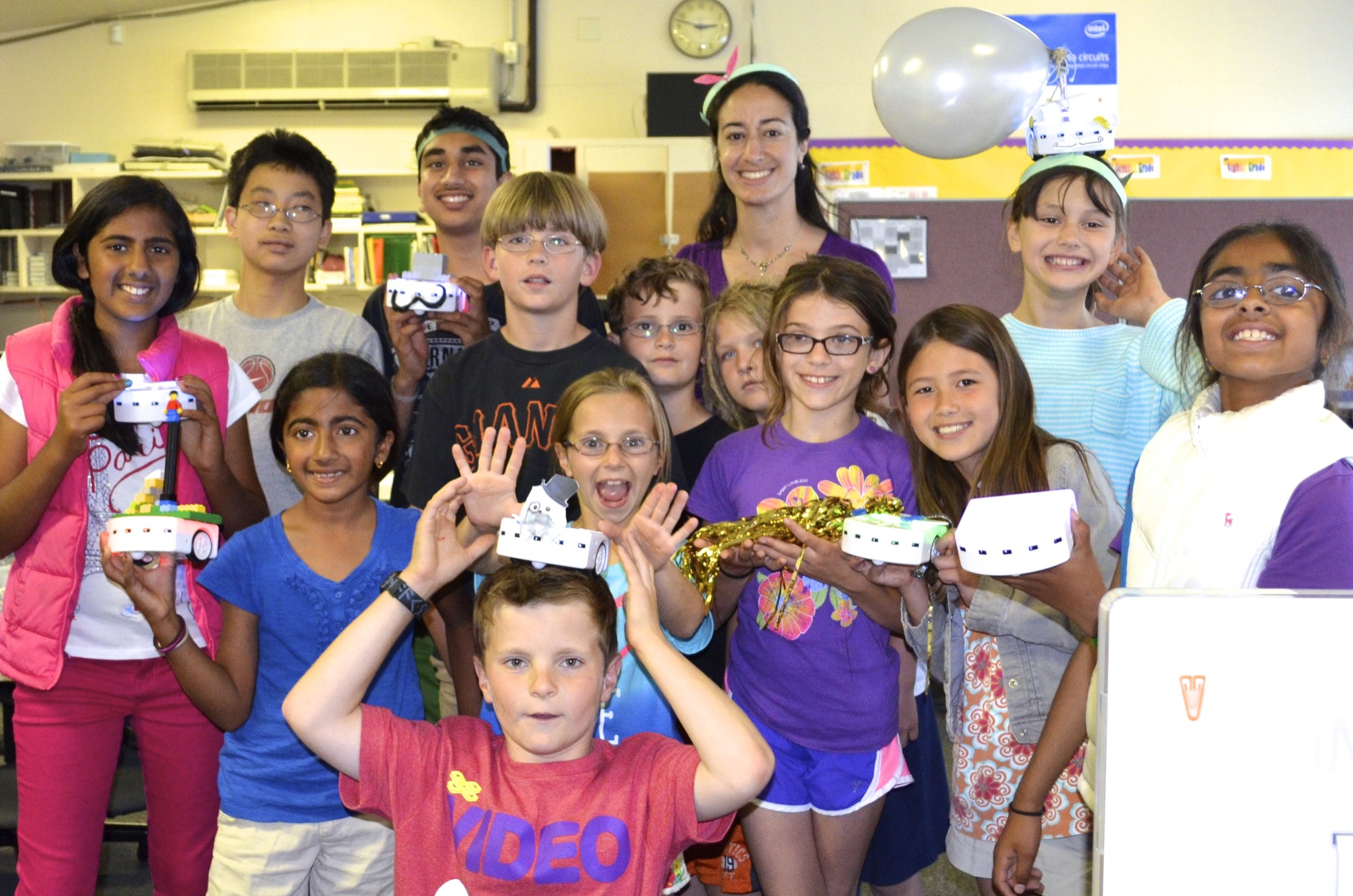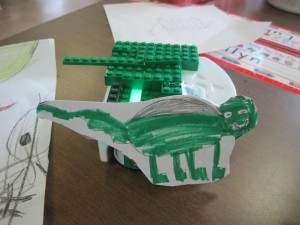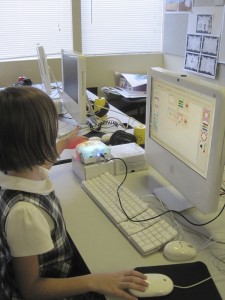
Robohub.org
Classroom robotics: Motivating independent learning and discovery

Sharon has found classroom robotics is an excellent motivator for independent learning and discovery: “The way I see it, if we can get kids programming robots at the age of seven, by the time they are in high school and beyond, they’ll be doing something even more amazing.”
With a background in mechanical engineering and an interest in design, engineering and working with kids, I happened into robotics education – and now I’ve been happily teaching and involved for five years.
I started out teaching Lego Mindstorms at a creative, after-school robotics program called Wizbots. After three years of teaching Lego Mindstorms to over 1000 kids, I had a good idea of its advantages and disadvantages. The advantages? Durable and great for the imagination. The disadvantages? If you weren’t an expert LEGO builder it’s a bit intimidating, it’s expensive, and you are stuck in a graphical programming world with no easy transition to learn real programming.
After three years of teaching, I started working with the robotics company Willow Garage to design an exhibit for The Tech Museum with the $400,000 PR2 robot. I helped design the software and interactive experience that had guests from 2 years to 99 years programming the robot. Guests created and saved poses by moving sliders, and then saw their code being composed in real time. We saw everything from the PR2 dancing the Macarena to performing Shakespeare.
I loved the fact that the PR2 inspired kids to get into robotics and lessened the intimidation of programming – it’s too bad that PR2’s size and price tag makes it impossible for a user to continue the learning experience at home. Fortunately, it was also at Willow Garage that I first came across the Thymio II robot and one of the involved researchers from EPFL. I immediately took a liking to this cute and personable little robot, with its 20 sensors and 39 LED. With such personality, I automatically assigned a gender, so from now on if I refer to a ‘he’, please understand that I am referring to the Thymio II, and know that I’ve also had kids decide that the Thymio is really a ‘she’.
I had a hunch that this would be a hit among kids and an excellent teaching tool for robotics. The first time I brought Thymio to the classroom, I gave a presentation about robotics, and boy did the kids FLIP when I took out Thymio. All of the kids excitedly exclaimed, “YOU HAVE A ROBOT, IN YOUR BAG?!”
The first time I took Thymio into a classroom was for my interview with Woodland School. After seeing such excitement from both the kindergarteners and 5th graders, I was pulled into work for Woodland as their Instructional Technology Coordinator for K-8th grade and to create a curriculum around Thymio.
What I love about the Thymio is its adaptability – I’ve been able to teach with it at every age level, from K-8 in the classroom. Thymio has all components in one, and many pre-programmed modes. For kindergarten we can talk about motors and sensors, and behaviors. The kids will create interactive animals by building off of Thymio with LEGO and other arts and crafts and then use the pre-programmed behaviors.

For the students who are around 8-10 years Thymio has been a great tool to teach experimentation, technology, critical thinking, programming, invention, teamwork, design, building … and I could go on and on. The visual programming language composes code in real time and creates a nice bridge to written code. I ran a successful summer camp where I was able to easily teach programming iterations and code writing to kids as young as seven.
Seeing such success in the classroom has motivated me to create a curriculum for other teachers so that they may be able to receive a box of robots and, with the help of an online curriculum, to then be able to start teaching a class. That is the reason why I started TechyKids. The best part about all of this is that the Thymio is a robot that, after some initial guidance, will motivate kids to learn and experiment themselves. Today was (another) perfect example of this – I helped with some troubleshooting for a 4th grade class, who were getting started with Thymio, but after that the kids were fully engrossed in their own work.

Some of the casual side conversations were as follows:
Student #1: “Oh, I think I know!”
Student #2: “Why?”
Student #3: “Now, I wonder how I can get him to sense a cliff…”
Female Student #1: “I love Technology.”
Student #4: “I found a way to make him blush.”
Student #5: “How did you do that?”
Female Student #2: “Would you rather have more PE or Technology?”
Female Student #3: “Technology, definitely”
What I loved about the Thymio-inspired conversations is that they came out naturally. Kids were asking why, collaborating, helping each other, and were passionate about their work. Classrooms everywhere have been yearning for this kind of a result, and I feel fortunate to have come upon a product that can produce such fulfilling results. The way I see it, if we can get kids programming robots at the age of seven, by the time they are in high school and beyond, they’ll be doing something even more amazing.
http://www.youtube.com/watch?v=9hIyN7AKF-4
tags: c-Education-DIY, education, opinion, Robohub focus on Robotics Education, Social aspect, Thymio



